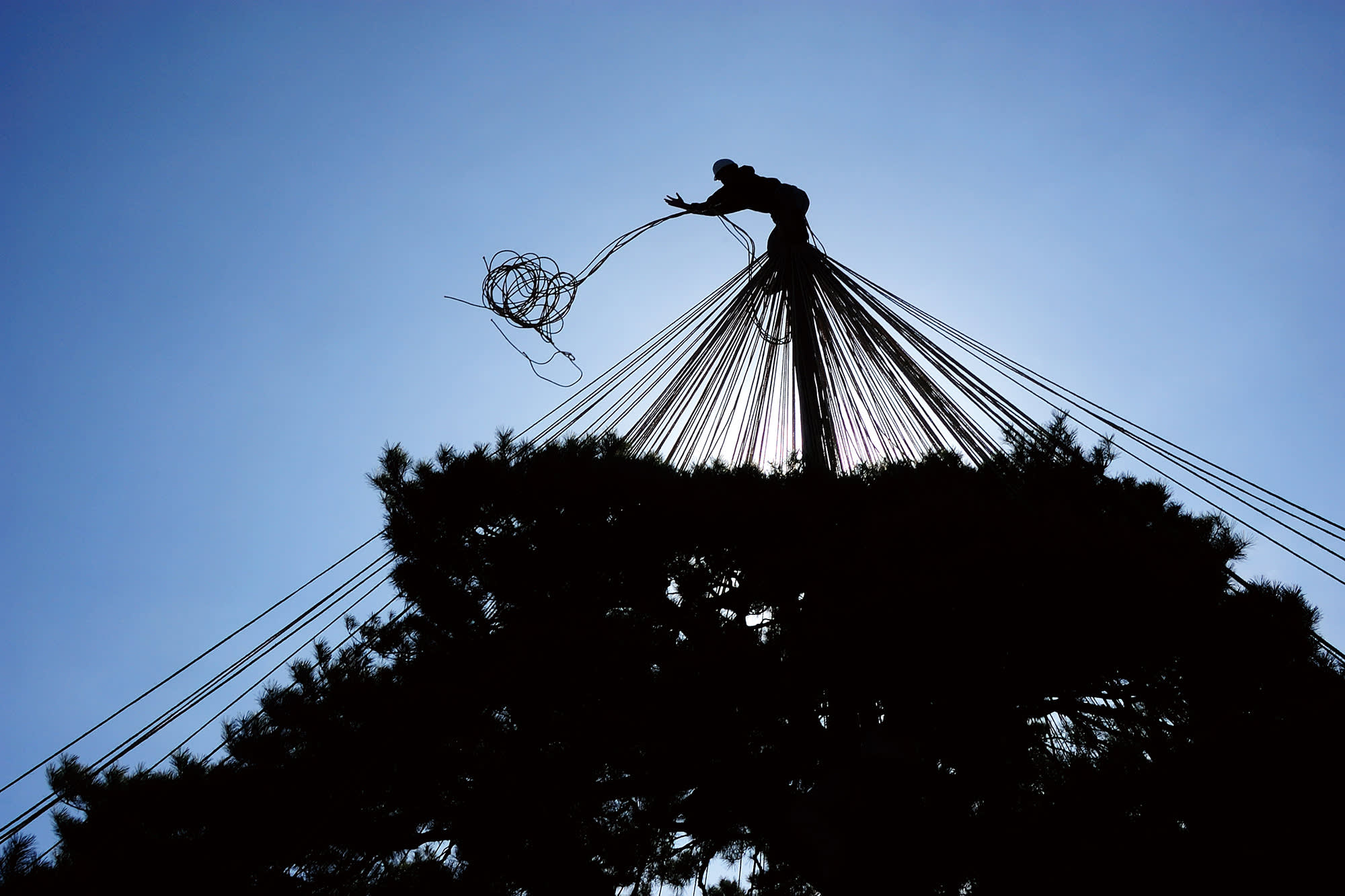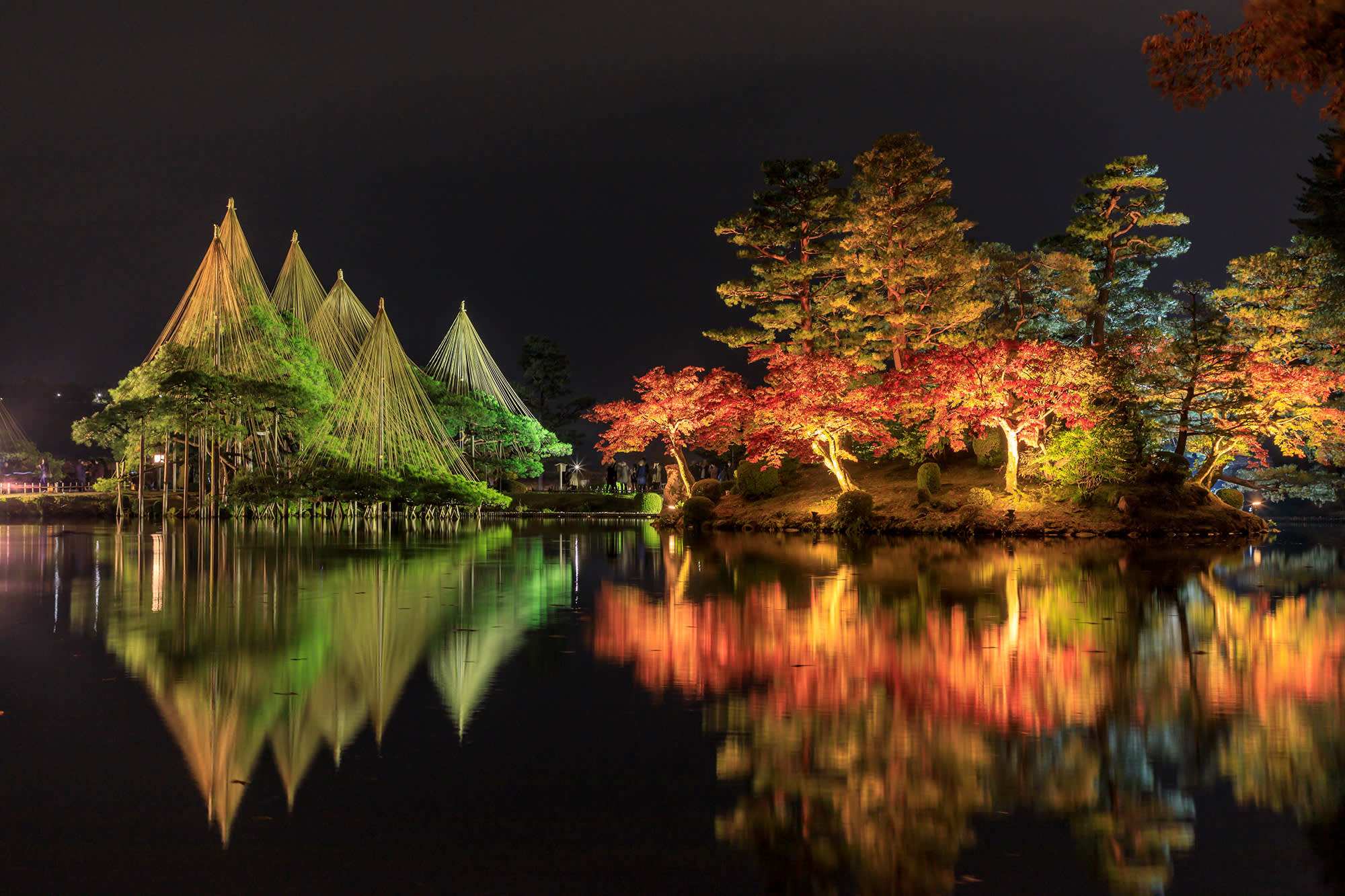Kenrokuen Garden 兼六園
One of Japan’s greatest traditional-style landscape gardens
Kenrokuen is an expansive Japanese-style strolling garden located next to Kanazawa Castle. Its blend of diverse garden elements has made it one of the most famous gardens in Japan.
Kenrokuen, meaning “garden of the combined six,” is so named because it combines the six qualities of an ideal garden according to an ancient Chinese text, ordinarily difficult to achieve in the same garden. They are grouped into three pairs: spaciousness and seclusion, human artifice and the effects of age, water features and vistas.
The garden’s appearance changes dramatically with the seasons. In spring, cherry blossoms form a pastel canopy over the walking path starting from the entrance facing Kanazawa Castle. In summer, carpets of green moss flourish in the woods below the pavilion on Yamazaki Hill. In autumn, the Japanese maples and zelkovas in the southeastern part of the garden burst into gold, crimson, and russet colors. In winter, gardeners tie up trees with bamboo and rope supports called yukizuri to help them weather the region’s heavy snowfall and maintain their painstakingly cultivated shape.
The garden is home to historic teahouses, a legacy of the importance of tea ceremony in Kanazawa during the Edo period (1603–1867). These include Yugao-tei, Kenrokuen’s oldest surviving structure, built in 1774. Shigure-tei, a more recent addition, was built in 2000 in the style of the garden’s original pavilion. Today, visitors can relax here with tea and traditional snacks.
The Maeda family, the rulers of the Kaga domain that included present-day Ishikawa, established a predecessor of Kenrokuen in the seventeenth century as the outer garden of Kanazawa Castle. It was originally much smaller, covering only the area around Renchimon Gate. Subsequent Maeda generations developed and expanded the garden through the mid-1800s. The garden opened to the public as Kenrokuen in 1874.
Basic Information
Kenrokuen Garden
Address
1 Kenrokumachi, KanazawaHours
Spring-Summer: 7:00 to 18:00; Autumn-Winter: 8:00 to 17:00Closed days
Open dailyFees
320 yen (100 yen for children aged 6 to 17)Website




